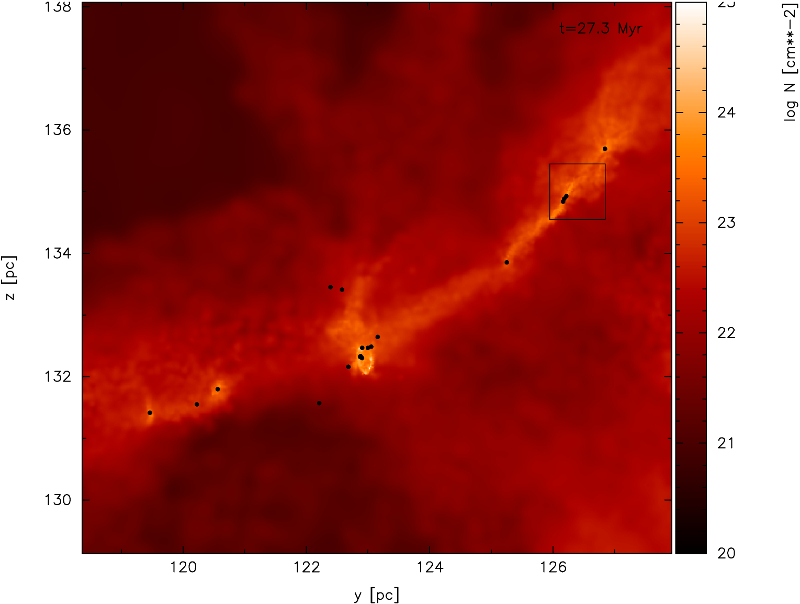
|
EPoS |
|
EPoS Contribution
|
|
Is the observed Galactic star formation rate compatible with gravitationally collapsing molecular clouds?
Enrique Vazquez-Semadeni Centro de Radioastronomia y Astrofisica, UNAM, Morelia, Mexico | |
| I discuss numerical evidence that molecular clouds and their substructures are in a state of gravitational contraction, and whether this scenario is compatible with the low observed Galactic star formation rate. I first discuss recent numerical work on atomic and molecular cloud formation and evolution, which suggests that gravitational contraction begins in the atomic phase, and that star formation begins long after the gravitational contraction has started (roughly 10 Myr later), so that the feedback from the newly formed stars must act against the ongoing contraction. The observed effect is that the feedback does reduce the star formation efficiency (SFE), but it does so by redirecting some of the infalling gas to the warm medium, rather than by maintaining the clouds in approximate hydrostatic equilibrium. A semi-analytical model based on this phenomenology reproduces correctly the locus of clouds in the Kenniccutt-Schmidt diagram, the evolutionary stages of GMCs, and the observed stellar age distribution in individual clouds. Finally, I discuss the formation of filaments in numerical simulations of cloud formation, and the free-fall time in non-spherical, finite structures, showing that it depends on the structures' aspect ratio besides depending on the volume density. This result may help reduce the discrepancy between the observed star formation rate and its free-fall estimate, | |
 | |
| Caption: Column density image of a filament forming by gravitational contraction in a simulation of the formation of a molecular cloud complex, showing similarity with observed filaments. | |
| Collaborators: Gilberto Gomez (CRyA UNAM) Pedro Colin (CRyA UNAM) Luis Zapata (CRyA UNAM) Manuel Zamora-Aviles (CRyA UNAM) Jesus A. Toala (CRyA UNAM; IAA, Spain) |
|